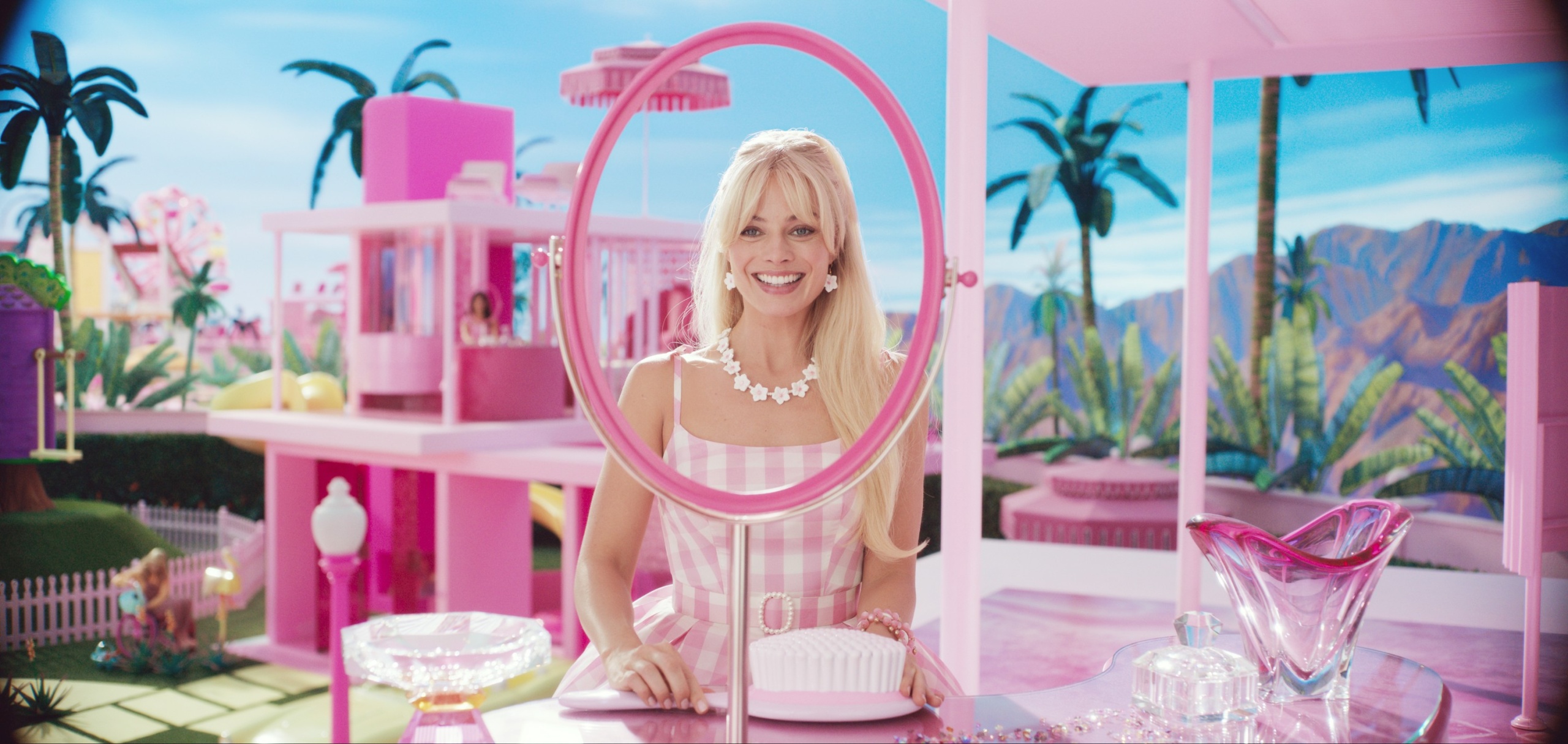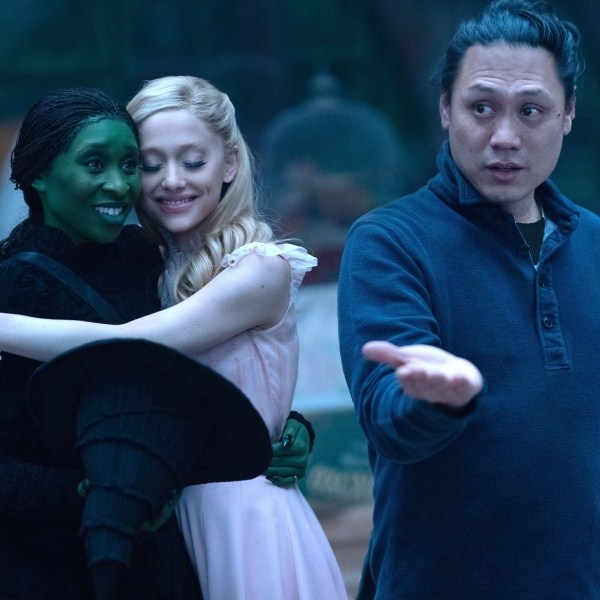This article contains IndieWire’s preliminary Best Costume Design predictions for the 2024 Oscars. We regularly update our predictions throughout awards season and republish previous versions (like this one) for readers to track changes in how the Oscar race has changed. For the latest update on the frontrunners for the 96th Academy Awards, see our 2024 Oscars predictions hub.
The State of the Race
It’s a race between “Barbie” (Warner Bros.) and “Poor Things” (Searchlight), the two big feminist films in which the costumes help personify their existential journeys. ”Barbie” is the favorite for conveying Mattel’s fashion history and tailoring it to fit story arcs for Barbie (Margot Robbie) and Ken (Ryan Gosling). However, “Poor Things” could win for being bolder and more provocative in fitting Bella (Emma Stone) way ahead of her Victorian time as a free spirit.
Other frontrunners include “Maestro” (Netflix), “Killers of the Flower Moon” (Apple TV+/Paramount), and “Oppenheimer” (Universal). In addition, the list of Oscar hopefuls includes “The Color Purple” (Warner Bros.), “Saltburn” (Amazon/MGM), “Wonka” (Warner Bros.), “Priscilla” (A24), “Napoleon” (Apple TV+/Sony Pictures), and “Asteroid City” (Focus Features).
Greta Gerwig’s billion-dollar blockbuster “Barbie” is the epitome of costume design: a fashion statement as well as an expression of character building for Barbie’s transformation from doll to human. The director reunites with Oscar-winning costume designer Jacqueline Durran (“Little Women”), who applied an interpretive design based on the history of Barbie costumes from Mattel spanning 60 years. This had the effect of sparking the memories of anyone who’s ever played with Barbies throughout the decades. It kicks off with the “2001: A Space Odyssey”-inspired monolithic opening, which presents Barbie as the first doll that had agency as a feminist statement. Durran started with the doll fashion pack as a reference point for coordinating outfits and accessories. Pink was dominant, but there were other dazzling colors and color combinations. The swimwear was culled from the ’50s and ’60s retro fits inspired by Brigitte Bardot. Chanel, which designed a pink-suited Barbie in the 2000s, was brought in as a collaborator to help with ’80s period styles.
In “Poor Things,” Yargos Lanthimos’ twisted “Frankenstein” gender-bender, Bella is reanimated with the brain of her unborn child by unconventional scientist Baxter (Willem Dafoe). This results in a strange and surreal transformation from a traumatized woman to a fearless one who upends 19th-century roles and conventions. The costume design of Holly Waddington (“The Great,” “Lady Macbeth”), therefore, is vital in conveying Bela’s emotional state of mind throughout her journey. The aesthetic is not tied to the period but becomes futuristic as they explored the use of latex and plastic in her wardrobe. She goes from wearing a white silk cape to dressing herself in very unconventional styles, including flamboyant dresses that evoke a blooming flower and bloomers with jacket and hat and military-looking dresses.

Bradley Cooper’s “Maestro” explores legendary conductor/composer Leonard Bernstein (Cooper) through the lens of his complicated love story with actress wife Felicia Montealegre (Carey Mulligan), spanning more than 40 years. Oscar-winner Mark Bridges (“Phantom Thread,” “The Artist”) applies what he calls “forensic costume design” to accurately depict what Bernstein wore when there was a dearth of photographic evidence (such as the shawl-collared velvet dinner jacket with tuxedo pants to the opening of “Mass”). Bridges also had to adjust for the first half being shot in black-and-white through an understanding of how prints or textures read, thanks to his experience on “The Artist.” The shift to color also hinges on his costume design (Felicia’s turquoise sheath dress, which is telegraphed by the monochromatic silhouette).
“Killers of the Flower Moon” marks the first opportunity for costume designer Jacqueline West to work with director Martin Scorsese. The four-time Oscar nominee (“Dune,” “The Revenant,” “The Curious Case of Benjamin Button,” “Quills”) found that his passion for authenticity paired well with her creative process on this 1920s fact-based Oklahoma crime drama about the serial murders of Osage Indians to steal their oil-rich territory. West worked with several Osage consultants on wardrobes, particularly Julie O’Keefe, and referenced the book “Wedding Clothes and the Osage Community.” The consultants provided West with clothes, photos, and filmed events from the story’s time period. As a result, she utilized many indigenous fabrics, colors, and styles for certain characters throughout the film. For example, Lily Gladstone’s Mollie Burkhart was dressed more traditionally than her sisters early on and subsequently lost the vibrancy of the colors she wore as she lost family members.

Christopher Nolan tapped costume designer Ellen Mirojnick (the Emmy-winning “Behind the Candelabra”) for his “Oppenheimer” biopic thriller about physicist J. Robert Oppenheimer (Cillian Murphy), and she provided the signature dapper look for the “father of the atomic bomb.” Oppenheimer’s silhouette remained constant once he arrived at Berkeley, and his iconic three-piece suits and fedora became his uniform and armor. This was the fashion statement that visually set him apart from the other scientists.
Blitz Bazawule’s “The Color Purple,” adapted from the Broadway stage musical and starring Fantasia Barrino as Alice Walker’s celebrated Celie, is more colorful and hyper-real than Steven Spielberg’s acclaimed 1985 original film. Thus, the director leans into a magical realism as part of its theatricality.
This extends to the more vibrant early 20th-century wardrobes for the ensemble cast from costume designer Francine Jamison-Tanchuck (who was the costume supervisor on the original film). This is especially true for Taraji P. Henson’s flamboyant jazz singer Shug, who helps liberate Celie during her remarkable journey of survival, endurance, and empowerment.
As for the rest: Ridley Scott’s “Napoleon” has Oscar-winning costume designer Janty Yates (“Gladiator”) dressing the power couple of Napoleon Bonaparte (Phoenix) and Empress Joséphine (Vanessa Kirby) in eye-popping neo-classical fashion (including their gold-embellished coronation outfits), and costume designer David Crossman handling the military costumes. Sofia Coppola’s “Priscilla,” costume designed by Stacey Battat (“On the Rocks,” “The Beguiled”), provides a counterpoint to Baz Luhrmann’s “Elvis.” It’s an American princess story between Cailee Spaeny’s teenage Priscilla and Jacob Elordi’s legendary Elvis, in which she gets lost in the glam of Graceland and overshadowed by The King, searching for her own identity. Battat relies heavily on historical accuracy to convey the essence of their wardrobes. Sometimes texture is more important than color, but the arc for Priscilla is having her diverge from Elvis to comfortably settle on a more natural look.
In addition, “Saltburn,” Emerald Fennell’s nasty takedown of the British upper class in the mid-2000s, finds outsider Oxford student Barry Keoghan falling for Adonis aristocrat Jacob Elordi, who takes him home for the summer at the sprawling estate of his eccentric family, the titular Saltburn. Costume designer Sophie Canale (“Bridgerton”) mixes sleaze and style (especially over-the-top accessories). It’s “Brideshead Revisited” meets “The Talented Mr. Ripley.”
Wes Anderson’s existential, Cold War odyssey “Asteroid City,” mainly set in a mid-’50s desert town, contains quirky and vibrant outfits from Oscar-winning costume designer Milena Canonero (“The Grand Budapest Hotel,” “Marie Antoinette”) that are nostalgic shout-outs to the era. The highlight revolves around the romance between Jason Schwartzman’s war photographer and Scarlett Johansson’s glam movie star. He’s personified by the khaki safari outfit and she by the alluring dress with hand-painted cactus flowers.
Potential nominees are listed in alphabetical order; no film will be deemed a frontrunner until we have seen it.
Frontrunners
“Barbie”
“Killers of the Flower Moon”
“Maestro”
“Oppenheimer”
“Poor Things”
Contenders
“Asteroid City”
“Napoleon”
“Priscilla”
“Saltburn”
“The Color Purple”
“Wonka”



